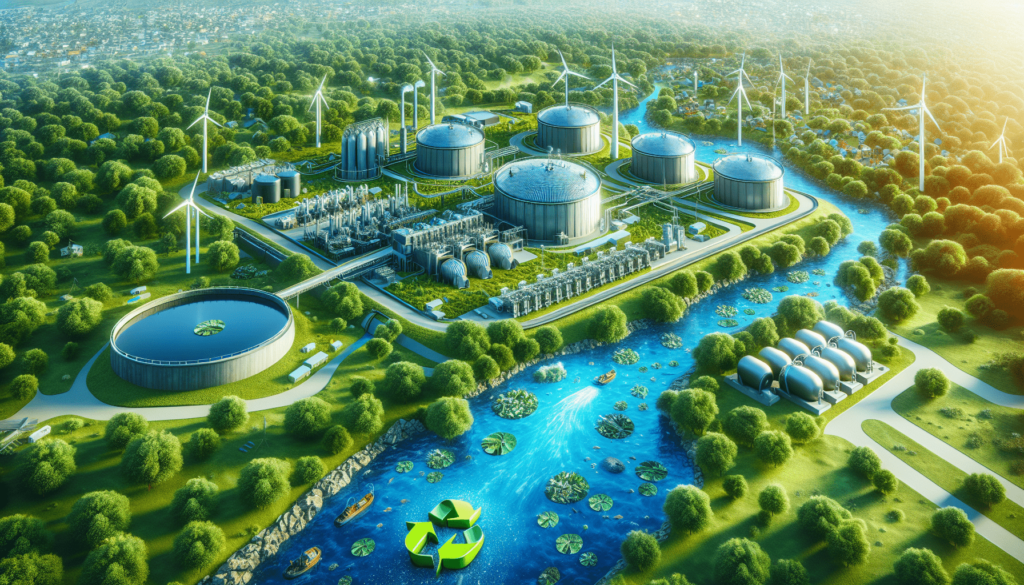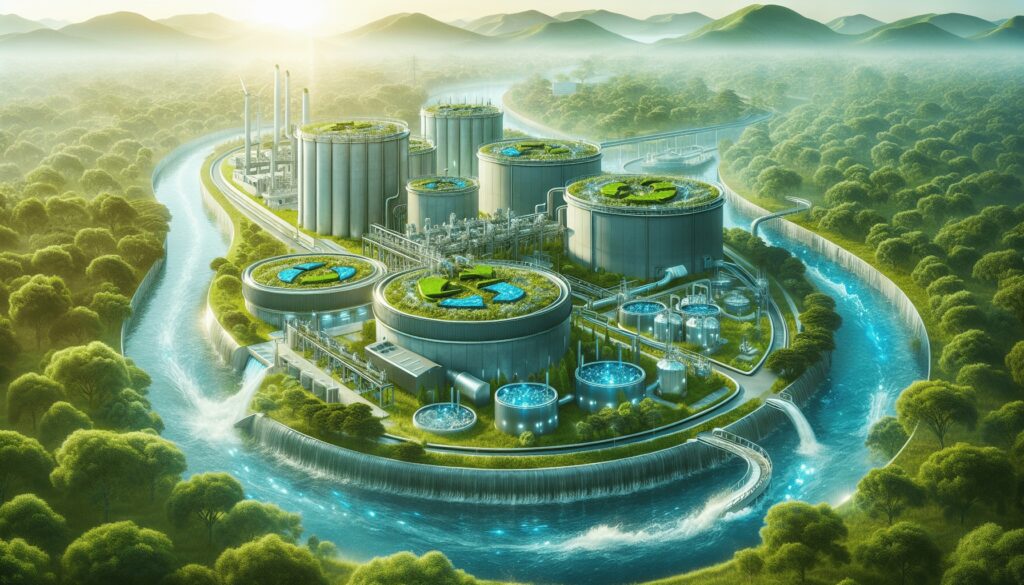
Have you ever wondered what happens to all the waste that gets flushed down our drains? In the labyrinth of municipal wastewater systems, wastewater sludge arises as a significant byproduct in the water treatment process. This article seeks to illuminate the innovative solutions that address the complex challenge of wastewater sludge disposal, ensuring that you emerge with a deeper understanding of this critical environmental issue.
Understanding Wastewater Sludge
What is Wastewater Sludge?
At the core, wastewater sludge is the residual, semi-solid material left behind after the treatment of wastewater. Its composition varies depending on the sources of wastewater and the treatment operations and processes utilized. Sludge primarily consists of organic matter, microorganisms, and a small proportion of inorganic materials.
The Generation of Sludge
Sludge generation is inevitable in wastewater treatment plants (WWTPs). As water flows through the various treatment stages, particles are trapped, leading to sludge formation. For every gallon of wastewater, a small proportion transforms into sludge through activities such as sedimentation and digestion. This process is crucial as it helps in purifying water but leads to a realization—the sludge requires adequate handling and disposal.
Environmental Impacts of Sludge
If not managed properly, sludge can pose significant threats to the environment. It can lead to soil and water pollution through runoff and leaching of harmful substances. Moreover, it releases potent greenhouse gases during decomposition, contributing to climate change. Consequently, the need for innovative disposal methods becomes imperative.
Conventional Methods of Sludge Disposal
Landfilling
Historically, landfilling was a common choice for sludge disposal. This method involves burying sludge in designated landfill sites. However, with increasing concerns over the limited landfill space and the environmental impact of leachate, its popularity is declining.
Incineration
Incineration involves burning sludge at high temperatures, reducing its volume significantly. Although effective in minimizing waste, it has drawbacks, such as high-energy consumption and potential air pollution from emissions.
Land Application
Using sludge as fertilizer or soil conditioner in agriculture takes advantage of its nutrient-rich composition. Nevertheless, concerns about heavy metals and pathogens in sludge have made this option less favorable without proper treatment and monitoring.
Innovative Solutions for Sludge Disposal
Anaerobic Digestion
Anaerobic digestion is an intriguing alternative, where microorganisms break down organic material in the absence of oxygen, resulting in biogas and a measurably reduced sludge volume. This biogas, mainly composed of methane, serves as a valuable renewable energy source. This method not only addresses waste disposal but also taps into energy production.
Steps in Anaerobic Digestion
- Feedstock Preparation: Waste is collected and prepared, ensuring it is homogenous for digestion.
- Digestion Process: Microorganisms convert organic matter into biogas through a series of biological processes in a digester.
- Biogas Utilization: Biogas is captured and either converted into electricity or refined into renewable natural gas (RNG).
- Digestate Management: The remaining solid material, called digestate, can be further treated for use as fertilizer.
Thermal Hydrolysis
Thermal hydrolysis involves breaking down sludge using heat and pressure, increasing the biodegradability of organic matter. This highly effective pretreatment method enhances biogas production when followed by anaerobic digestion and significantly reduces the volume of disposable sludge.
Vermicomposting
In vermicomposting, earthworms convert organic waste into nutrient-rich compost. Sludge processed through this method yields high-quality compost while minimizing odors and pathogens. It’s a sustainable, low-energy solution to sludge disposal, though it may not be suitable for large volumes without ample space and management skills.
Phytoremediation
Phytoremediation employs plants to extract and remove contaminants from sludge and wastewater. Certain plant species have the capability to absorb heavy metals and reduce pollutant levels in sludge. Over time, this method promises a greener approach to sludge management, although its scalability and long-term effectiveness need further exploration.
Sustainable Land Reclamation
Sustainable land reclamation involves using treated sludge to rehabilitate degraded land. This approach transforms areas like abandoned mines or barren lands into lush, fertile fields. By closing the loop between waste disposal and land reclamation, sludge not only finds a purpose but contributes to ecological restoration efforts.
The Role of Technological Advancement
Automation and AI in Sludge Management
Technology plays a crucial role in optimizing sludge management. Automation and artificial intelligence (AI) help improve efficiency in sludge treatment processes. These technologies ensure better process control, monitoring, and prediction of treatment outcomes, reducing operational costs and minimizing environmental impacts.
Next-Gen Sensors and Monitoring Systems
Advanced sensors and real-time monitoring systems enable close observation of sludge treatment processes. They aid in detecting irregularities early, ensuring accurate treatment, and providing data analytics for continuous process improvement.
Biotechnological Innovations
Recent biotechnological breakthroughs have introduced genetically engineered microorganisms that expedite sludge breakdown. These organisms break down complex waste components more efficiently, enhancing biogas yield and reducing final sludge quantities.

Environmental and Economic Benefits
Energy Recovery and Cost Savings
Innovative sludge disposal methods, such as anaerobic digestion and thermal hydrolysis, contribute to energy recovery. By generating biogas, wastewater treatment plants can operate with reduced reliance on external energy sources, leading to substantial cost savings.
Reduced Carbon Footprint
Advanced disposal solutions play a significant role in mitigating climate change by reducing greenhouse gas emissions. Methods that capture and utilize biogas or convert sludge into usable products help shrink the carbon footprint of sludge management activities.
Resource Recovery and Circular Economy
Adopting a circular economy approach in sludge management emphasizes resource recovery. The conversion of sludge into products like biogas, compost, or land-reclamation material exemplifies a shift from waste to resource, aligning with sustainable economic practices.
Challenges and Considerations
Public Perception and Acceptance
Public perception of sludge disposal practices can pose challenges. Ensuring transparent communication about safety measures and environmental benefits is vital in gaining public trust and acceptance of innovative disposal methods.
Regulatory Frameworks
Navigating regulatory environments is crucial for adopting new sludge management technologies. Compliance with stringent environmental regulations ensures safe and effective sludge disposal.
Economic Viability and Infrastructure
Implementing innovative sludge disposal methods often requires substantial investment in infrastructure and technology. Ensuring economic viability and securing funding remain essential challenges for both public and private enterprises.
Future Prospects and Innovations
Research and Development
Ongoing research and development promise new horizons for wastewater sludge disposal. Continued investment in R&D is likely to yield groundbreaking technologies that further improve efficiency, reduce environmental footprints, and enhance resource recovery.
Integration of Renewable Energy
The integration of renewable energy sources within wastewater treatment facilities could pave the way for energy-neutral or even energy-positive operations. Innovations in solar, wind, and hydro energy could complement sludge disposal processes.
Global Collaboration and Knowledge Sharing
Global collaboration in sludge management can hasten the adoption of best practices and innovative solutions. Sharing knowledge and resources across borders fosters the spread of successful technologies, enhancing the global capacity to tackle wastewater sludge challenges.
Conclusion
Wastewater sludge disposal is no longer just a necessity but an opportunity for innovation, sustainability, and resource recovery. With advancements in technology and a growing emphasis on environmental stewardship, the trajectory of sludge management is one of transformation and potential. By understanding the innovative solutions available, you contribute to a future that prioritizes both ecological health and economic efficiency. By embracing these changes, we are collaboratively paving the way for a sustainable tomorrow, where wastewater sludge is viewed not as waste, but as a resource with untapped potential.